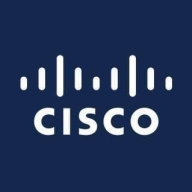



Find out what your peers are saying about Fortinet, Netgate, OPNsense and others in Firewalls.
Clients are now comfortable and not wasting productive hours on IT support.
The automation part is giving us a cost benefit and speed; we can react faster.
It's a very useful tool to mitigate and protect your enterprise.
The biggest return on investment when using Cisco Secure Firewall is that there's no waste in any infrastructure cost and licensing costs for us.
From my point of view, the biggest return on investment when using Cisco Secure Firewall is the single pane of glass, which is a huge plus for us.
The biggest return on investment for me when using Cisco Secure Firewall is reliability and robust network design.
I observed a fifty to sixty percent reduction in operational costs after migrating to FortiGate VM.
They have a platform that organizes their networks and access effectively.
We haven't used MPLS for over five years now, and it was extremely beneficial to see the changes from MPLS to SD-WAN using Fortinet FortiGate.
If they can save their data from attackers then it would save them at least two days of not working plus the cost of recovery, which would be much more than the cost of the system and maintenance.
Since the memory leak fixes, it's been incredibly stable and requires minimal maintenance.
In four years of using it, that payment of 189 dollars per year has already paid off.
They offer very accurate solutions.
The quick resolution of issues with Fortinet FortiGate is due to the support of the company and the fact that the equipment is easy to work with.
I would rate the technical support for Fortinet FortiGate a ten out of ten.
I have to provide many logs, yet problems remain unresolved, often requiring workarounds rather than solutions.
I have been working with them on firewalls, wireless, switching, and routing, and the support is the best.
They have expertise and provide solutions for the most difficult problems.
The speed of Fortinet's technical support is significantly faster compared to Palo Alto.
Their support is helpful and effective.
The end-user support is delayed at levels L2 and L3.
When I provide detailed information about the problem, they've been able to reply quickly with a solution or go research the problem and get back to us quickly with a fix.
They are highly responsive.
I couldn't imagine having better support.
They scale up really well from smaller models like the FortiGate 40 and 50 to bigger sites with the FortiGate 100 for more throughput - up to enterprise datacenters.
The variation comes in terms of the interfaces and throughputs, but from a security perspective, you get the same benefit, irrespective of whether you have an entry-level unit or an enterprise.
We determine sizing based on multiple factors: number of users, available links, traffic types, server count, services in use, and whether services will be published.
Scalability presents a challenge.
Compared to FortiGate and Palo Alto, it lags in configuration and other aspects.
Even with the highest one, the 4600, we still face issues, particularly when transitioning between screens; it becomes very slow.
Scalability is well-supported, with the notable ability to implement features easily.
It can start with a single core and scale up to a 32-core license for a robust deployment.
We currently have a little over 2,000 users working with Fortinet FortiGate in our environment.
Even with a jump from a 50 megabit to a 500 megabit internet connection and approximately 65 active VPN clients, our firewall operates smoothly without any strain.
pfSense is almost infinitely scalable.
If I put things into a certain context and say that we have a network that has around 100 people, then you don't put up a device that can manage 100 people. Instead, you need to get a device that can manage 150 to 200 people, and then you can create room for growth.
We're experiencing 99.999% availability consistently.
I would rate the stability of Fortinet FortiGate a ten out of ten.
Currently, we are experiencing a general outage of one of the main internet service providers of the Dominican Republic, and we have not been impacted in our operations because with SD-WAN, we have another internet service provider and we are working with the second WAN connection without any disruption.
We have often encountered split-brain scenarios during failover processes and code upgrades, which have been persistent problems for us.
We work with a cluster with high availability, so if something goes wrong, we have it functioning.
Cisco Secure Firewall offers exceptional performance and stability.
The product has been very stable, based on my ten to eleven years of experience.
In the past couple of years, they started releasing numerous new features, and things have become somewhat unstable.
The traffic is stable and seamless.
I rate the solution's stability a ten out of ten.
I've noticed a substantial improvement in stability and ease of use for upgrades and patching over the past year or two.
When I replace consumer routers with pfSense for small businesses with two or three employees, they are often amazed to discover the router can run for a year without a reboot.
Investing in a solution that can accommodate such growth would be more cost-effective than repeatedly purchasing new hardware.
While Fortinet claims to offer a comprehensive network solution, it falls short in addressing computer application issues, particularly server security.
When considering Sophos XG, which we also use, the logging and reporting functionality is notably more efficient.
My ongoing complaint for the last six years has been the lack of CLI functionality, which hinders my ability to work on the firewall, alongside concerns regarding deployment time.
Firepower Management Center is quite out of date compared to other vendors.
The integration between Cisco products themselves presents difficulties, such as SD-WAN configuration.
The constant daily revisions necessitate meticulous identification of the relevant documents to prevent the use of outdated information that could jeopardize our environment.
I am concerned about Fortinet's ability to help us meet regulatory compliance because its optimal functionality requires deploying all solutions within the mesh as Fortinet products.
The API needs better integration to match accounts and objects more effectively.
I need to speak to someone immediately.
There is some trade-off between having a certain level of security and maintaining acceptable performance.
If I need to go between different VLANs, I have VLAN 19.1 and VLAN 19.2, and I strictly use Netgate pfSense, but it doesn't route very efficiently and works quite slowly.
Last year, I renewed the support for three years, which can sometimes be expensive but depends on the security benefits and how it helps us.
It offers cost savings as it is generally cheaper than the competition.
It is about 20% cheaper.
It's good to have them, however, it costs us a lot.
It's considered a premium, but people pay that price for Cisco.
There are a lot of in-place contracts for us that provide the benefit of discounts.
FortiGate is priced lower than Palo Alto.
The license for Fortinet FortiGate-VM costs 100K to 150K Philippine pesos per year for VM1 or VM2.
They could be slightly cheaper, however, Fortinet offers a good cost-benefit ratio.
The price of setup is approximately €500 to €800, which also includes the initial monitoring.
You can acquire a decent embedded PC for around a hundred dollars and install pfSense on it, effectively creating a robust firewall solution.
The product is free of cost.
In terms of security, we have not experienced any security flaws or loopholes, and it has proven to be quite stable.
FortiGate has helped reduce the risk of cyberattacks that might disrupt our client's production.
These features help reduce our downtime, manage the ISPs, and deploy SLAs for all the website traffic.
What stands out positively about Cisco is their training and support, which has effectively prepared engineers to work with their products.
This is very important to my organization, as we work extensively with security because we are a bank, so we can keep the data safe.
Cisco Secure Firewall allows me to safeguard Layer 7 or Layer 3 and manage the security rules with the business needs of my organization.
The more integrated we become, the less we spend on solving bugs and issues, allowing us to reduce time focusing on understanding and improving our network.
Fortinet is the only provider to have successfully set up a unified operating system on all its products in the network security ecosystem.
I appreciate FortiGate's flexibility, which allows for centralized management through FortiManager.
With pfSense, network configurations adhere to standard practices, facilitating troubleshooting without the need for complex overlays or policies.
The price point is the most valuable aspect of the solution.
I like the tool's flexibility in the sense that you do not have to buy an appliance. You can put it on your own hardware, and it can be very simplistic hardware with simple configurations.
| Product | Market Share (%) |
|---|---|
| Fortinet FortiGate | 20.7% |
| Netgate pfSense | 11.1% |
| Cisco Secure Firewall | 6.0% |
| Fortinet FortiGate-VM | 1.9% |
| Other | 60.300000000000004% |




| Company Size | Count |
|---|---|
| Small Business | 350 |
| Midsize Enterprise | 129 |
| Large Enterprise | 187 |
| Company Size | Count |
|---|---|
| Small Business | 180 |
| Midsize Enterprise | 126 |
| Large Enterprise | 212 |
| Company Size | Count |
|---|---|
| Small Business | 68 |
| Midsize Enterprise | 30 |
| Large Enterprise | 33 |
| Company Size | Count |
|---|---|
| Small Business | 166 |
| Midsize Enterprise | 33 |
| Large Enterprise | 28 |
Fortinet FortiGate excels in providing integrated VPN, firewalling, and Unified Threat Management (UTM) with centralized management and high availability. It supports remote access and comprehensive threat protection, making it a preferred choice for securing networks.
Fortinet FortiGate offers a robust security platform with features such as strong intrusion prevention, application control, and web filtering. Its integration with Active Directory and SD-WAN functionality provides scalable solutions for large networks. Users appreciate its ease of use through centralized management interfaces, ensuring robust security with flexible configurations. However, FortiGate could enhance its graphical interface and technical support responsiveness, address firmware bugs and costly licensing, improve logging, integrate better with third-party tools, and strengthen scalability and memory for log storage. Complexity in configuration and the need for intuitive features are noted challenges, and there's a demand for advanced security, zero-trust capabilities, and AI integration.
What are the key features of Fortinet FortiGate?Fortinet FortiGate is widely implemented across industries like education, finance, and government. Companies use it for firewall protection, VPN, and SD-WAN capabilities, ensuring secure perimeter and data center security. It facilitates remote access management and traffic routing optimization, offering reliable security and connectivity solutions.
Cisco Secure Firewall stands as a robust and adaptable security solution, catering to organizations of all sizes. It's designed to shield networks from a diverse array of cyber threats, such as ransomware, malware, and phishing attacks. Beyond mere protection, it also offers secure access to corporate resources, beneficial for employees, partners, and customers alike. One of its key functions includes network segmentation, which serves to isolate critical assets and minimize the risk of lateral movement within the network.
The core features of Cisco Secure Firewall are multifaceted:
The benefits of deploying Cisco Secure Firewall are substantial. It significantly reduces the risk of cyberattacks, thereby enhancing the security posture of an organization. This security also translates into increased productivity, as secure access means uninterrupted work. Compliance with industry regulations is another advantage, as secure access and network segmentation align with many regulatory standards. Additionally, it helps in reducing IT costs by automating security tasks and simplifying management processes.
In practical scenarios, Cisco Secure Firewall finds diverse applications. It's instrumental in protecting branch offices from cyberattacks, securing remote access for various stakeholders, safeguarding cloud workloads, and segmenting networks to isolate sensitive areas.
User reviews from PeerSpot reflect an overall positive experience with the Cisco Secure Firewall. Users appreciate its ease of configuration, good management capabilities, robust protection, user-friendly interface, and scalability. However, some areas for improvement include better integration capabilities with other vendors, maturity, control over bandwidth for end-users, and addressing software bugs.
In summary, Cisco Secure Firewall is a comprehensive, versatile, and reliable security solution that effectively meets the security needs of various organizations. It offers a balance of advanced protection, user-friendly management, and scalability, making it a valuable asset in the realm of network security.
FortiGate Virtual Appliances allow you to mitigate blind spots by implementing critical security controls within your virtual infrastructure. They also allow you to rapidly provision security infrastructure whenever and wherever it is needed. FortiGate virtual appliances feature all of the security and networking services common to traditional hardware-based FortiGate appliances. With the addition of virtual appliances from Fortinet, you can deploy a mix of hardware and virtual appliances, operating together and managed from a common centralized management platform.
Netgate pfSense is widely leveraged by organizations for its comprehensive capabilities in firewalls, VPN servers, and bandwidth management. It suits LAN, WAN, and DMZ networks, offering secure, scalable, and efficient networking solutions.
Netgate pfSense stands out in diverse environments with its enterprise-grade features and cost-effective operations compared to competitors like Cisco. Deployed as an edge device, it optimizes routing, ad-blocking, content filtering, and traffic shaping. Users benefit from its versatile configurations, robust firewall protection, VPN functionality, and ISP load balancing. The open-source nature allows for extensive customization, integrating plugins like Snort and pfBlockerNG, and compatibility with third-party tools enhances its utility. The intuitive GUI combined with detailed logging and centralized management fortifies network security.
What features define Netgate pfSense?
What benefits should be considered for ROI?
Organizations in industries such as finance, healthcare, and education find Netgate pfSense integral due to its advanced security features and cost benefits. Its scalable architecture and strong VPN support are crucial for industries requiring stringent data protection and reliable remote access. The adaptability of pfSense makes it suitable for dynamic environments seeking comprehensive, secure networking solutions.